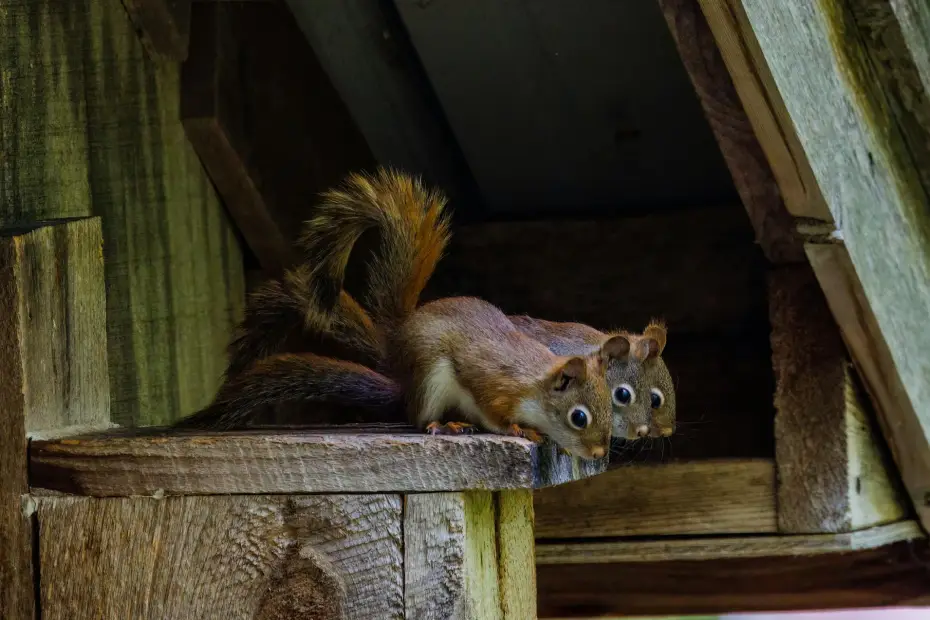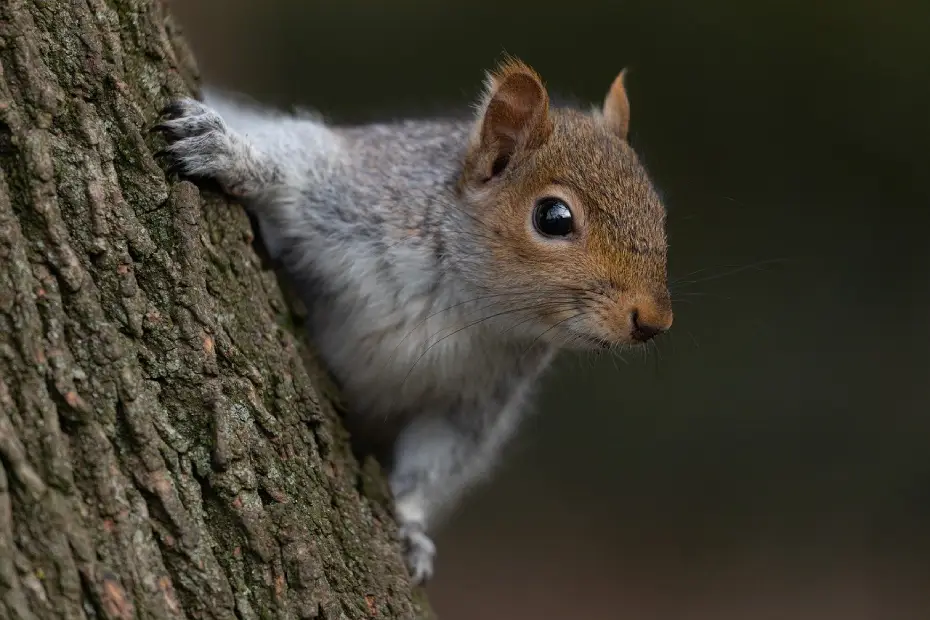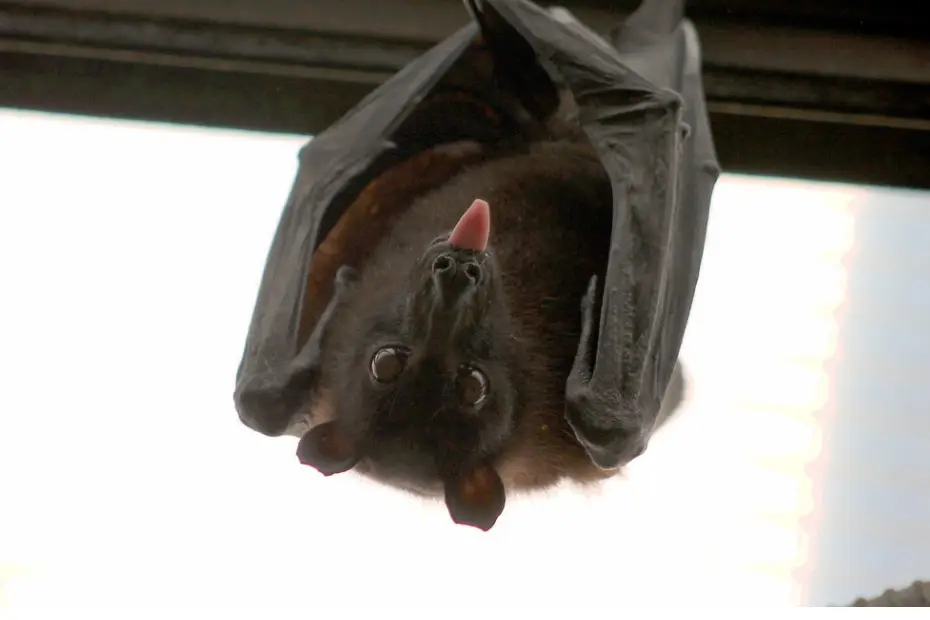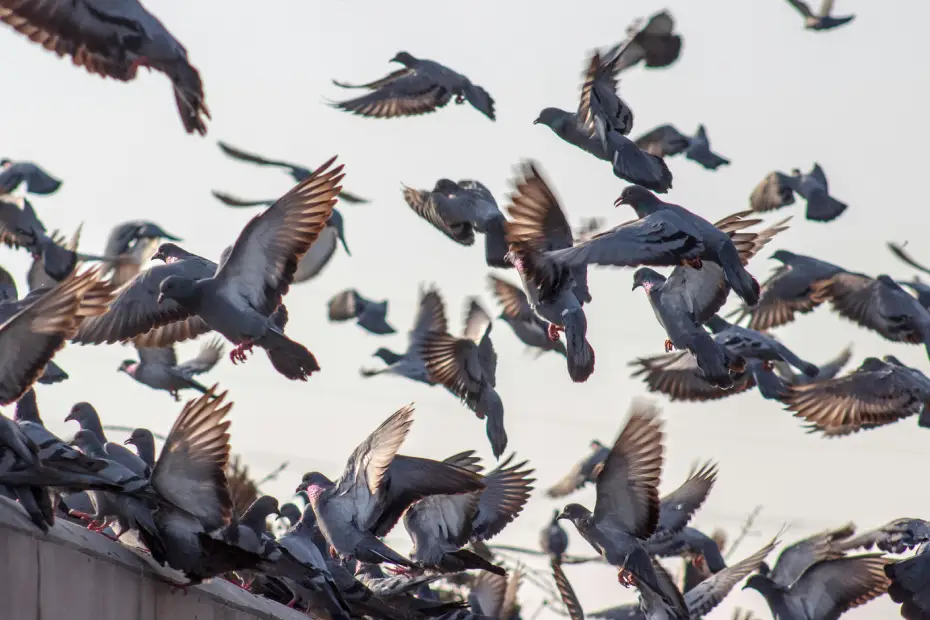Table of Contents
Finding that squirrels have taken up residence in your attic can cause a range of feelings, including worry, annoyance, and even mild panic. You may feel overpowered by these furry pests’ constant running, possible harm to your belongings, and plain arrogance.
However, keep in mind that humane squirrel removal is not only feasible but also quite successful before taking harsh measures. We’ll examine the causes behind squirrels’ preference for attics in this in-depth tutorial, as well as the warning signs of an infestation and, most crucially, how to humanely remove them from your home and keep them from coming back.
Understanding the Problem: Squirrels in the Attic
Naturally adaptable animals, squirrels—especially the Eastern Gray Squirrel—are prized for their dexterity and adaptability. Your attic makes a desirable nesting location because of its insulation, warmth, and relative safety, especially in the winter or during breeding seasons. The reason they head to attics is
Shelter: From inclement weather and predators, attics offer a secure shelter.
Nesting: They provide a safe and cozy environment in which to construct nests and raise their young.
Food Storage: During the winter, squirrels frequently store food in attics, particularly nuts and seeds.
Signs of a Squirrel Infestation
Early detection of squirrel infestation symptoms is essential for efficient and compassionate elimination. Pay attention to the following:
- Sounds: You may hear scuttling, scratching, or thumping sounds in your attic during the hours of dawn and dusk when squirrels are most active.
- Droppings: Roughly the size of a rice grain, squirrel droppings are pellet-shaped, dark brown or black in color.
- The damage: that squirrels can do to your attic is that they nibble on wood, insulation, and wiring. They might also leave behind detritus and build nests.
- Nests: Your attic or insulation may have signs of previous nests constructed of sticks, leaves, and other materials.
- Entry points: Keep an eye out for any openings or gaps in your fascia boards, soffits, or roof that squirrels might be utilising to get into your attic.
Potential Damage and Risks
An infestation of squirrels in your attic can cause a number of issues, including:
Structural Damage: By chewing on wiring, wood, and insulation, squirrels can lead to structural damage as well as fire concerns.
Contamination: Urine and excrement from them can contaminate insulation and give it an unpleasant smell.
Disease Transmission: Humans and pets may be at danger for contracting diseases including rabies, leptospirosis, and salmonellosis, which are carried by squirrels.
Energy Loss: Heat gain or loss resulting from damaged insulation may raise energy costs.
Recognising the possible hazards connected to squirrels in the attic highlights how critical it is to take quick, decisive action to solve the issue.
Humane Eviction Strategies
Prioritizing humane measures that protect your property and respect the animal’s well-being is the key to eliminating a squirrel infestation. The following are some practical methods for executing a nonviolent eviction:
Prevention: Keeping Squirrels Out
The best long-term strategy to keep squirrels out of your attic is prevention. It entails locating and caulking any possible openings as well as implementing preventative steps to deter squirrels from ever climbing onto your roof in the first place.
- Sealing Entry Points:
- Thorough Inspection: Examine your attic, roofline, and external walls carefully to look for any openings, gaps, or crevices that squirrels might use as a haven. Be mindful of the spaces surrounding pipes, eaves, vents, and chimneys.
- Effective Sealants: Use strong materials like caulk, steel wool, or hardware cloth to seal any possible entry sites after you’ve located them. Because squirrels will not stop chewing, make sure the materials you choose will not break under their gnawing.
- Professional Assistance: You might consider getting assistance from a handyman with experience in exclusion work or a professional wildlife removal agency if you’re unsure how to identify or seal all entry locations.
- Trimming Trees and Branches:
- Eliminate Access Points: Prune any tree limbs that dangle over your roof or near it. Because they are skilled climbers, squirrels may easily cross branches to get into your house.
- Maintain Distance: To make it harder for squirrels to access your roof, try to keep branches at least 6 to 8 feet away from it.
- Regular Pruning: To keep nearby trees and shrubs from providing squirrels with easy access, trim them on a regular basis.
- Installing Chimney Caps and Vent Covers:
- Chimney Protection: To keep squirrels and other animals out of the chimney, install a robust wire mesh chimney top.
- Vent Covers: Use sturdy wire mesh or vent covers made especially to keep animals out to cover all vents, including gable and attic vents.
By carefully carrying out these precautions, you build a strong barrier that drastically lowers the likelihood that squirrels will ever enter your attic in the first place.
Repellents and Deterrents: Discouraging Unwanted Guests
When combined with other techniques, repellents and deterrents can be a beneficial complement to your humane eviction plan. By making their surroundings less desirable, these strategies hope to drive squirrels to look for cover elsewhere.
- Natural Repellents
- Strong Scents: Due to their keen sense of smell, squirrels can be put off by some scents. Popular natural repellents include cayenne pepper, mothballs, and peppermint oil.
- Application: Apply these repellents to cotton balls or rags and set them next to entrances, nesting sites, or other locations where squirrels are known to congregate.
- Reapplication: Occasionally, especially after a lot of cleaning or rain, natural repellents may need to be reapply.
- Commercial Repellents
- Variety of Options: There are many commercial squirrel repellents on the market, ranging from electrical devices to sprays and granules.
- Active Ingredients: Seek for items with good customer feedback and natural components like peppermint oil or capsaicin.
- Safety: Make sure to choose products that are safe to use around children and pets, and always pay close attention to the manufacturer’s directions.
- Ultrasonic Devices
- High-Frequency Sounds:While most people and pets cannot hear the high-frequency noises produced by ultrasonic equipment, squirrels find them unpleasant.
- Mixed Results: Although the usefulness of ultrasonic devices is disputed, some homeowners have claimed to have successfully kept squirrels away from them.
- Placement: Ensure that the device is not blocked by furniture or other items and position it close to the area where squirrels are active.
Repellants and deterrents are useful weapons in your humane eviction toolbox, but they might not be a perfect solution.

Live Trapping and Relocation: A Compassionate Approach
A humane method of getting rid of squirrels from your attic without harming them is to use live trapping and relocation. With this approach, the squirrels are caught in a live trap and released into a suitable natural environment that is separate from your house..
- Choosing the Right Trap:
Choosing the right trap is essential to a successful and compassionate capture. Choose a live trap made especially for squirrels; make sure it’s roomy enough for them to walk around in, but not so roomy that they can’t get out. Multi-catch traps can be useful if you have a larger infestation, but single-door traps are typically easier for beginners to use.
- Baiting and Placement:
Strategic placement of traps and the use of alluring baits are essential for successful live trapping. Fruits, nuts, seeds, and peanut butter are among the foods that squirrels especially enjoy. Set the baited trap close to locations where you’ve seen squirrel activity, including their nests, travel routes, or entry points.
- Relocation Guidelines and Regulations:
It’s crucial to confirm your local laws and regulations on wildlife protection before releasing any squirrels that have become trapped. Relocating wildlife may be prohibited in some regions, and releasing squirrels too near to your house may result in their return. It is usually advised to release them into a suitable habitat with access to food and shelter at least five kilometers from your home.
Tips for Live Trapping and Relocation
- Patience is essential: Be persistent and patient since squirrels may initially be apprehensive of the trap.
- Regularly check the traps: Make sure the squirrels in the traps are not left there for long by checking them at least twice a day.
- Wear gloves: To avoid any bites or scratches, wear gloves at all times when working with traps and squirrels.
- Release carefully: Release the squirrels with caution by opening the trap door slowly and softly and letting them go out of it on their own.
Although it takes time and work, live capturing and relocation is a gratifying solution that lets you get rid of squirrels in your attic while respecting their lives.
One-Way Exclusion Doors: A Smart and Effective Solution
A sensible and ethical alternative to trapping or moving squirrels out of your attic is to use one-way exclusion doors. Squirrels can leave your attic through these doors, which are placed over existing entry points and keep them from coming back.
- What Are They and How Do They Work?
Usually constructed of strong wire mesh or plastic, one-way exclusion doors feature a spring-loaded flap that lets squirrels shove out but keeps them from coming back. After every squirrel has departed, you can permanently block the entrance.
- Benefits of Using One-Way Doors:
- Humane: This method allows squirrels to leave on their own without being harmed or stressed.
- Effective: One-way doors have a high success rate in evicting squirrels and preventing re-entry.
- Versatile: They can be used for various entry points, including holes, gaps, and vents.
- Preventative: Once the squirrels are gone and the entry points are sealed, one-way doors also deter other wildlife from entering your attic.
- Installation and Usage Tips:
- Professional Installation: While DIY installation is possible, it’s recommended to hire a professional wildlife removal service to ensure proper placement and functionality.
- Monitor the Door: After installing the one-way door, monitor it for a few days to ensure all squirrels have left the attic.
- Seal the Entry Point: Once you’re confident all squirrels have exited, seal the entry point permanently to prevent re-entry.
For homeowners looking for a long-term solution to evict squirrels, one-way exclusion doors are a great choice. They provide a solution that is efficient, effective, and largely hands-off.
Professional Wildlife Removal Services: Expert Assistance
While DIY methods can be effective for minor squirrel infestations, there are situations where seeking professional wildlife removal services is the most prudent course of action.
- When to Consider Hiring Professionals:
- Large Infestations: If you have a large number of squirrels in your attic or suspect they have built nests, professional removal is recommended.
- Difficulty Accessing Entry Points: Some entry points may be difficult or dangerous to reach, requiring specialized equipment and expertise.
- Unsuccessful DIY Attempts: If you’ve tried DIY methods without success or the squirrels keep returning, it’s time to call in the professionals.
- Concerns about Safety or Damage: If you’re worried about potential damage to your home or safety risks associated with squirrel removal, professionals can handle the situation safely and efficiently.
- Baby Squirrels: If you discover baby squirrels in your attic, it’s best to leave their removal to professionals who have the experience and knowledge to handle them humanely.
- How to Choose a Reputable Company:
- Licensing and Insurance: Ensure the company is licensed and insured to protect yourself from liability in case of accidents or damage.
- Experience and Expertise: Look for a company with a proven track record in humane wildlife removal and experience in dealing with squirrel infestations.
- Humane Methods: Choose a company committed to using humane eviction techniques and avoiding harmful or lethal methods.
- Customer Reviews and Testimonials: Read online reviews and testimonials from previous customers to gauge the company’s reputation and customer satisfaction.
- Written Estimate: Get a written estimate that clearly outlines the services provided, the cost, and any guarantees offered.
- Cost Considerations:
The cost of professional squirrel removal can vary depending on the severity of the infestation, the number of entry points, and the methods used. It’s essential to get quotes from multiple companies to compare prices and services. Keep in mind that while professional removal may seem expensive initially, it can save you money in the long run by preventing further damage to your home and ensuring the squirrels are evicted effectively.
Post-Eviction Measures: Preventing Re-entry
Once the squirrels have been successfully evicted from your attic, it’s vital to take proactive steps to prevent them from returning.
- Thorough Attic Inspection and Repair:
Conduct a meticulous inspection of your attic, paying close attention to any areas where squirrels may have caused damage. Repair any holes, gaps, or chewed wires, and reinforce vulnerable areas with durable materials to prevent future entry.
- Cleaning and Deodorizing the Attic:
Squirrels leave behind scent trails and droppings that can attract other squirrels. Thoroughly clean the attic, removing any nesting materials, debris, or droppings. Use an enzyme-based cleaner to eliminate any lingering odors that might attract new squirrels.
- Ongoing Maintenance and Prevention Tips
- Regular Inspections: Inspect your attic and roofline periodically for signs of damage or new entry points.
- Trim Trees and Branches: Keep trees and branches trimmed away from your house to prevent squirrels from accessing your roof.
- Secure Food Sources: Store birdseed, pet food, and other potential food sources in airtight containers and avoid leaving food scraps outdoors.
- Squirrel Guards: Consider installing squirrel guards on bird feeders and chimney caps to deter them from accessing these areas.
By diligently implementing these post-eviction measures, you can create a less inviting environment for squirrels and significantly reduce the likelihood of future infestations.
Additional Considerations for Humane Squirrel Removal
Although the above-discussed solutions address the main techniques for evicting squirrels in a compassionate manner, there are a few more things to think about:
- Baby Squirrels in the Attic
You should act very carefully and compassionately if you find newborn squirrels in your attic. Waiting until the kids are mature enough to leave the nest on their own—usually between 6 and 8 weeks of age—is the best course of action. You can then move forward with the eviction and preventative measures after they’ve left. To ensure the safety and well-being of the young squirrels, seek advice from a reputable wildlife removal agency if you are uncertain of their age.
- Dealing with Injured or Sick Squirrels
It’s crucial to act carefully if you come across a sick or injured squirrel while the eviction is underway. Make contact with a nearby wildlife rehabilitator who can offer the support and care required. Steer clear of the squirrels directly since they may defend themselves by biting or scratching.
- Local Regulations and Wildlife Protection Laws
Learn about the local laws pertaining to wildlife conservation and local restrictions before beginning any squirrel removal projects. It’s important to abide by any laws that certain jurisdictions may have regarding the capturing or relocation of animals in order to prevent legal issues.
- DIY vs. Professional Removal: Pros and Cons
For homeowners who feel comfortable using hands-on methods or for small infestations, DIY squirrel eradication can be a financially advantageous solution. On the other hand, professional wildlife removal services are a great resource for larger infestations or circumstances where do-it-yourself tactics have not worked since they provide knowledge, specialized equipment, and humane eviction procedures.
- Cost Comparison of Different Eviction Methods
Depending on the method selected and the extent of the infestation, squirrel eviction costs can change. Repellants and one-way exclusion doors are examples of do-it-yourself techniques that are typically less expensive than hiring a pro removal company. On the other hand, if DIY projects don’t work out, professional services might end up being more economical in the long run because they provide a more thorough answer.
Conclusion
A sensible and caring way to deal with squirrel infestations in your attic is through humane squirrel removal. Through comprehension of squirrel behavior, use of preventive measures, and utilization of efficient eviction tactics, you can recover your area and guarantee the welfare of these amazing animals. Recall that effective squirrel eviction requires endurance, patience, and a dedication to compassionate methods. Consult a knowledgeable wildlife removal agency for professional advice if you run into problems or are unclear of the best course of action.
You may live in harmony with squirrels while keeping your house and property safe by giving humane methods first priority and adopting preventative measures to avoid repeat infestations. Recall that a wide variety of species inhabits our earth with us, and it is our duty to treat them with kindness and respect.



